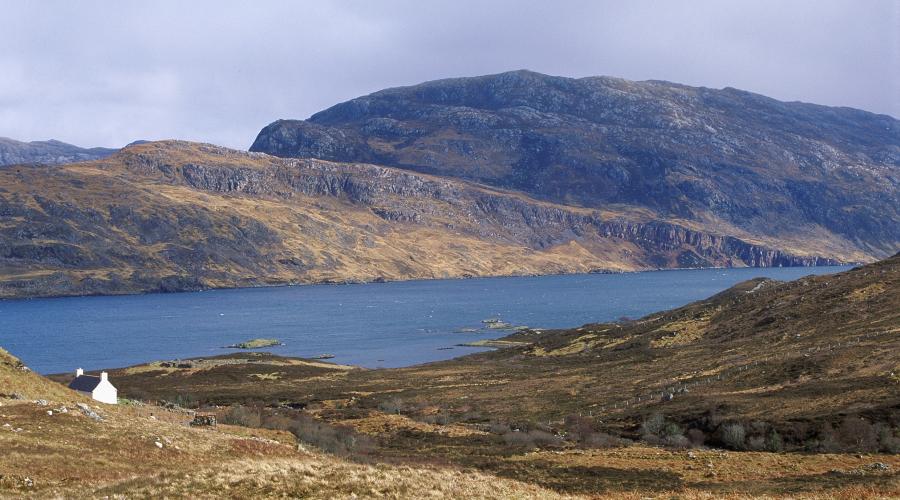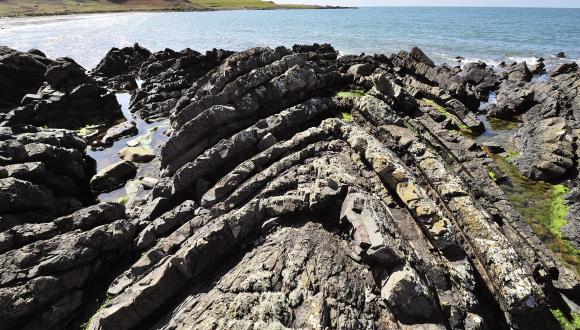
North-west Seaboard: geological foundations
Britain’s oldest rocks – the 3,000 million-year-old Lewisian rocks – are found in the foundations of Scotland’s North-west Seaboard.
Rocks of three distinct ages form the geological foundations of Scotland’s North-west Seaboard, which includes:
- the Western Isles
- Coll, Tiree, Rum and Skye
- the North West Highlands from Cape Wrath to Kyle of Lochalsh
A fault known as the Moine Thrust separates these foundations from those of the neighbouring Northern Highlands.
Lewisian rocks
At up to 3,000 million years old, the Lewisian rocks are the oldest rocks in the North-west Seaboard and in Scotland as a whole. They’re also among the world’s oldest rocks.
The Lewisian rocks formed over a huge span of time (up to 2,000 million years) through the burial, compression, folding and heating of both:
- large amounts of cooled molten rock
- much smaller volumes of muddy, sandy and rare carbonate (e.g. limestone) sediments
Torridonian rocks
By about 1,000 million years ago, the Lewisian rocks were already ancient and had been eroded down into a hilly landscape.
About 1,200 million to 800 million years ago, huge rivers flowed across this landscape, depositing layers of red sandstone, muds and pebbly conglomerates. This sequence of river sediments is known as the Torridonian, and it once formed a blanket up to 7.5km thick over the Lewisian landscape.
Like the Lewisian rocks, the Torridonian rocks were later partly eroded away. Today, much of the old Lewisian landscape is visible once more, and it is dotted with hills of Torridonian rock, like Slioch and Suilven.
Cambrian and Ordovician rocks
A shallow sea covered the area about 550 million to 500 million years ago (late Cambrian and early Ordovician periods).
Onto the eroded surface of Lewisian and Torridonian rocks were laid down:
- first, a sequence of pure white sands – which is now quartzite
- second, some muddier sediments – which now form soft, nutrient-rich Fucoid beds
- finally, a thick sequence of carbonate rocks – which are now Durness dolomite (magnesium-rich limestone)
These Cambro-Ordovician sediments have largely been eroded away and are now only found:
- in a thin strip along the east edge of the North-west Seaboard, next to the Moine Thrust
- on the tops of hills such as Beinn Eighe and Foinaven




